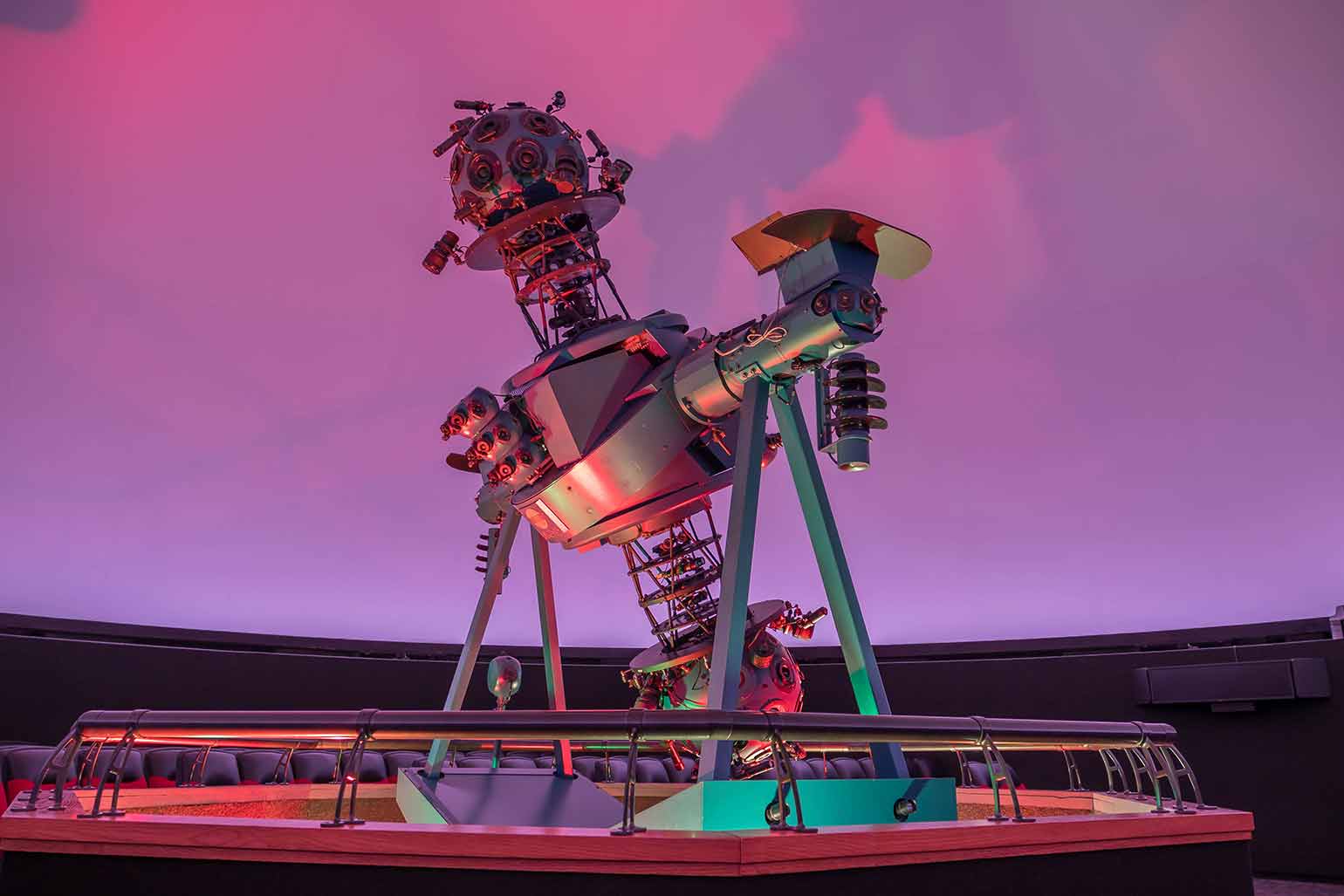In recent years, Japanese people have come to seek “healing (or relief, relaxing)” in entertainment. Well, our world has been getting more and more stressful every year… For Japanese people, planetariums might be a popular place to get “healing” from such stress. Surprisingly, Japan is one of the countries with the largest number of planetarium projectors open to the public in the world. The number of them is about 300. As of 2024, there are the planetarium facilities in all 47 prefectures in Japan. Although they vary in size, they have long been popular recreational facilities for off-campus learning and as dating spots. Currently, the content of those screenings varies from facility to facility. Most of the programs are based on seasonal projections of the domestic starry sky, but some programs also include starry skies of other regions or countries of the world or reproductions of “astronomical shows” such as comets and meteor showers.

Now, don’t you wonder why there are so many planetariums in Japan? Although not so many, original research in the field of astronomy, such as star navigation or the creation of calendars, has been conducted in Japan for a long time. However, much of the knowledge in those fields came from abroad. There are also few legends or stories related to the sun, moon, or starry skies that are unique to Japan. There were also some unique Japanese ways of interpreting the constellations, but these were not well known to the general public. According to one theory, this is because a fairly high level of knowledge in that field was imported from abroad early on, before research in that field was conducted independently in Japan. And, since these knowledge remained monopolized by the upper classes, there was not much progress in research for improvement. Well, it is very important knowledge for the governing class, so it is not surprising that it is monopolized, is it? Then, why are there so many planetariums in Japan despite such historical background? In fact, Japanese planetarium projectors were quite advanced from the beginning. Japan had succeeded in developing an advanced domestically produced planetarium projector as early as shortly after the war. Chiyoda Kogaku Seiko Corporation (later Konica Minolta) and Goto Optical Laboratory. The planetarium projectors developed by these two companies had come to account for about half of the world market share. It is said that the fact that the world was in the midst of a space race at the time also boosted the popularity of these advanced planetarium projectors. Later, in 1998, a projector (personally built by Takayuki Ohira) that made it possible to project 100 times the number of fixed stars as before was announced and became a major topic of conversation.
Are you interested in a planetarium in Japan? Japanese planetariums are relatively easy to visit. Incidentally, it is often said that the starry sky in Japan can only be seen beautifully in a planetarium. So, why don’t you enjoy them, too?




_op.png)
_001.png)
_002.png)
_003.png)
_004.png)
_005.png)
_006.png)
_007.png)
_008.png)
